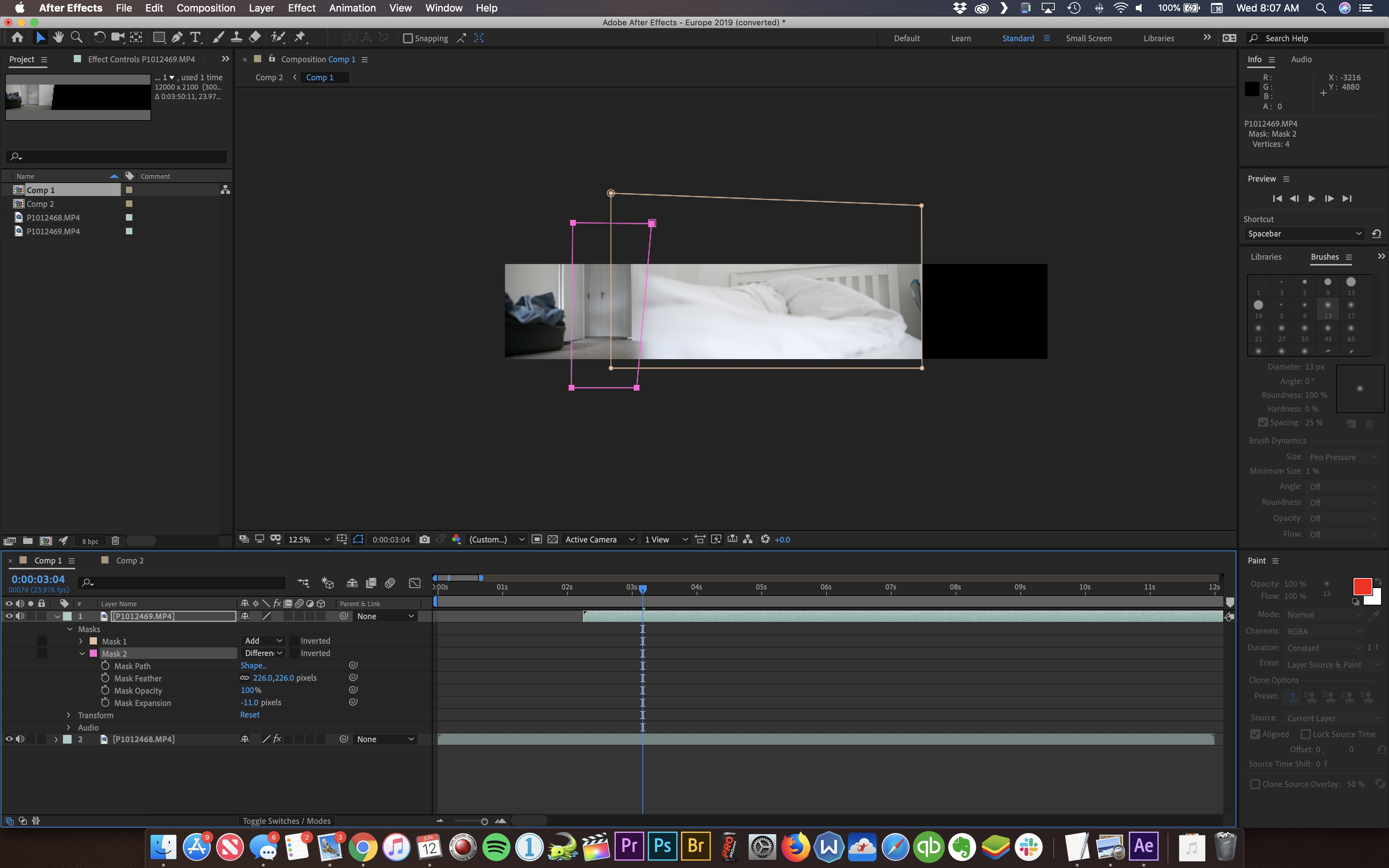- Home
- After Effects
- Discussions
- Re: Creating a long seamless panning sequence with...
- Re: Creating a long seamless panning sequence with...
Creating a long seamless panning sequence with over 50 clips?
Copy link to clipboard
Copied
I want to film a bunch of locked down shots and have a fake camera slowly pan its positioning between each video clip.
In the end, there may be about 40-50 different clips lined up next to each other---but i only want to show in the final video one video while panning through---but i want to make it look seamless (which is up to my creativity in matching shots)
I attached two screen shots of a test i did. Do i need to make a really wide pixel by pixel (like 24000x2160) and then create a new composition and slowly keyframe to the next shots? or is there a better way to do it? I almost want an open artboard where a camera could pan between each shot it desires in an open "sandbox"...
 the first ss is my "wide" pixel by pixel composition
the first ss is my "wide" pixel by pixel composition
the second ss is what would be my final output. It will be in a 4:3 aspect ratio.
Also, i dont want the pan to look robotic--but with smooth acceleration and deceleration--is that possible?
Copy link to clipboard
Copied
Judging from your screenshots you there is a basic flaw in your test. You can see different planes in the shots, the floor, the walls, all in different planes. If you just slide the images across the background you will not get any parallax changes and anything you put in front of the background will look very much out of place.
To answer your question, you don't need a really wide comp, you just need to animate each shot and make the seams as invisible as you can. As soon as s shot leaves the frame, trim the layer so you don't have any extra layers in the comp.
If you have 50 shots and it takes about 10 seconds for each one to cross the screen, which would be a pan speed that should not give you any juddering or strobing problems, then your comp is going to be 500 seconds long. That's an awfully long time for a single shot in any movie. You'll have to figure out how to hold the attention of the audience.
If you can live with the weird perspective changes you'll get as the background moves the easiest thing to do would be to match up the edges of your images, parent the second image to the first, then animate the position of the first image so it drags the second one across the screen, then repeat until you have all of your images moving at a constant speed. Then nest that moving background shot in your main comp and apply time remapping. You can then do all the speed changes you want without dropping frames or creating jerky moves.
I hope this explanation helps. This kind of VFX shot takes a lot of planning and preparation to pull off. You can't just grab a camera and take a bunch of stills and end up with something that will be believable.
Find more inspiration, events, and resources on the new Adobe Community
Explore Now